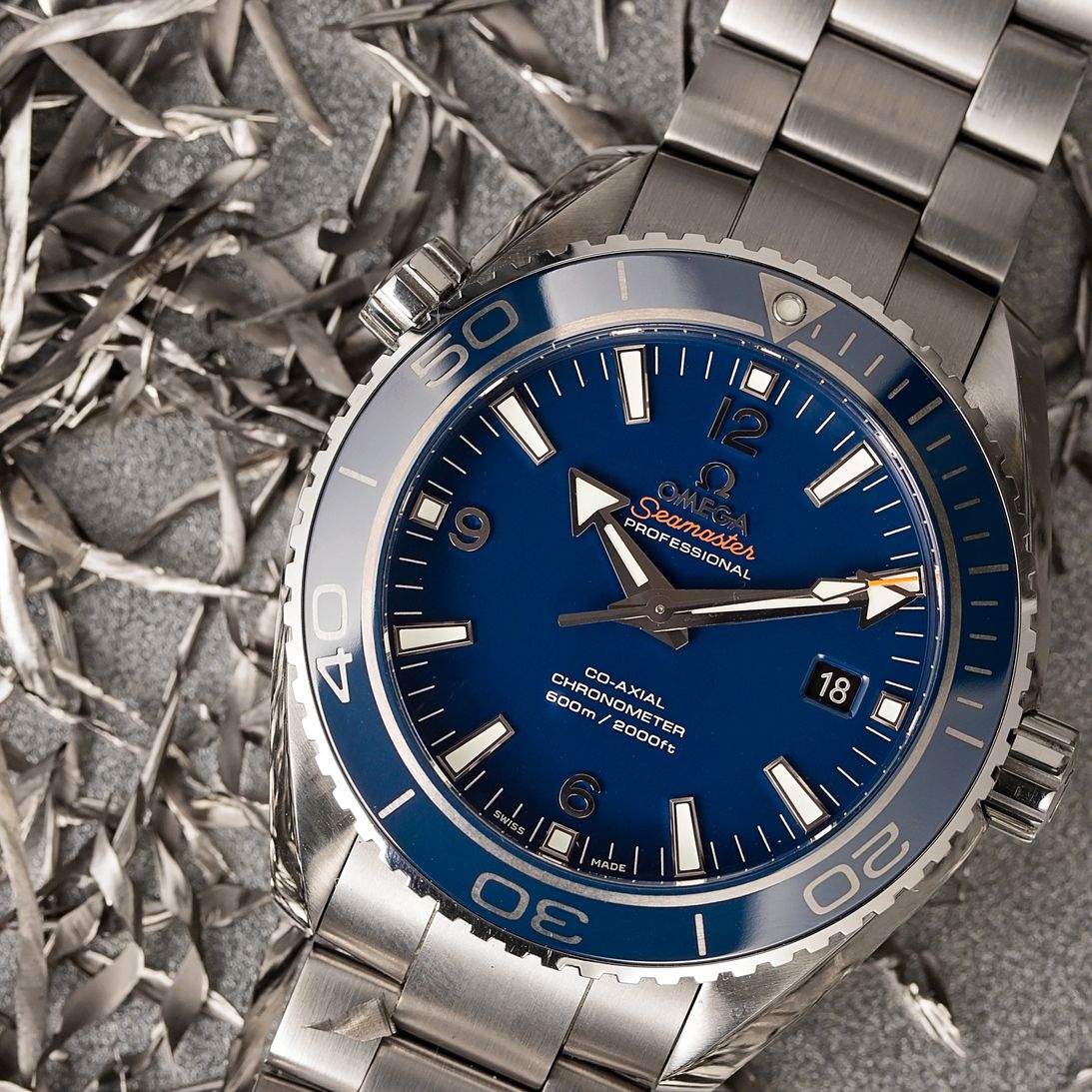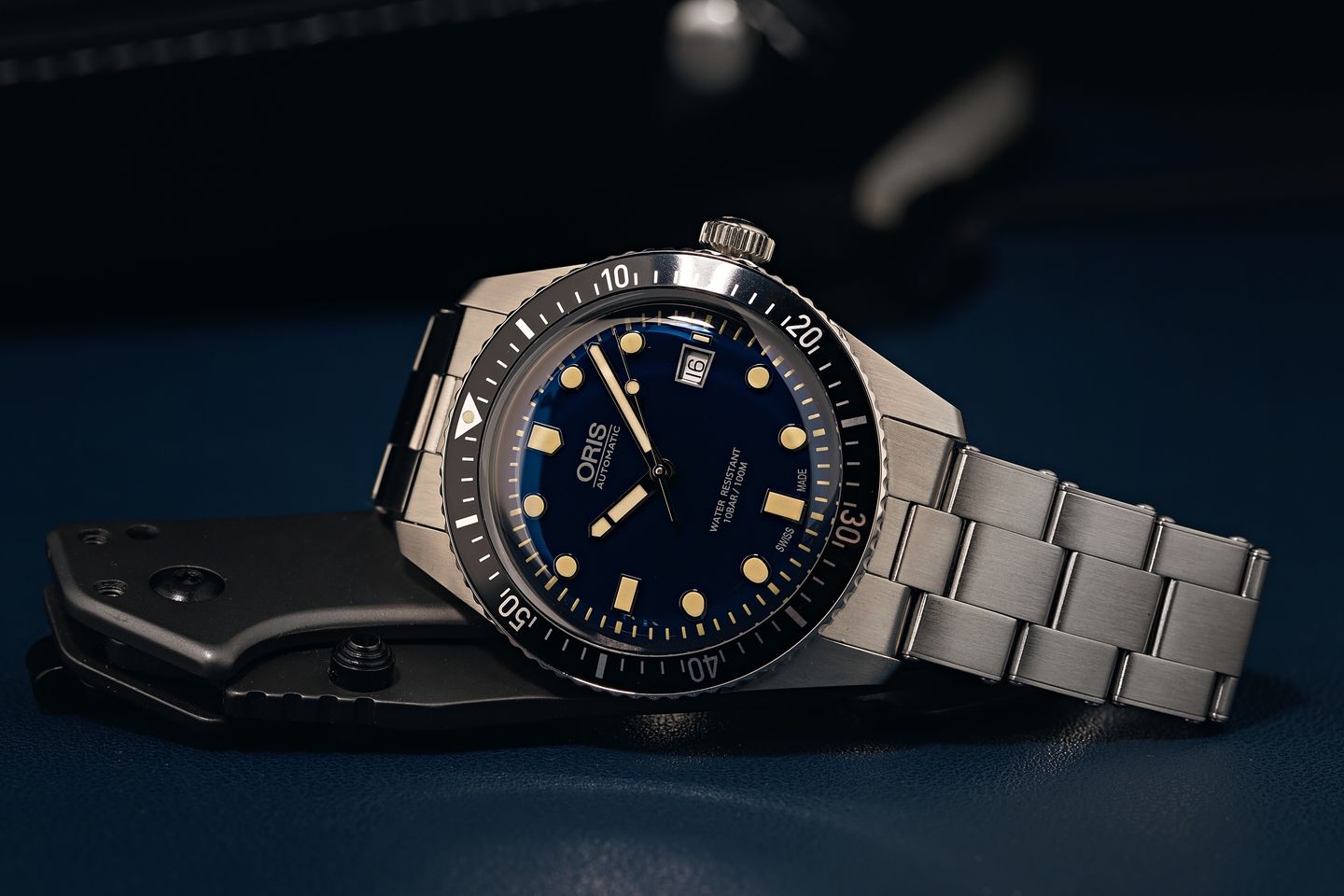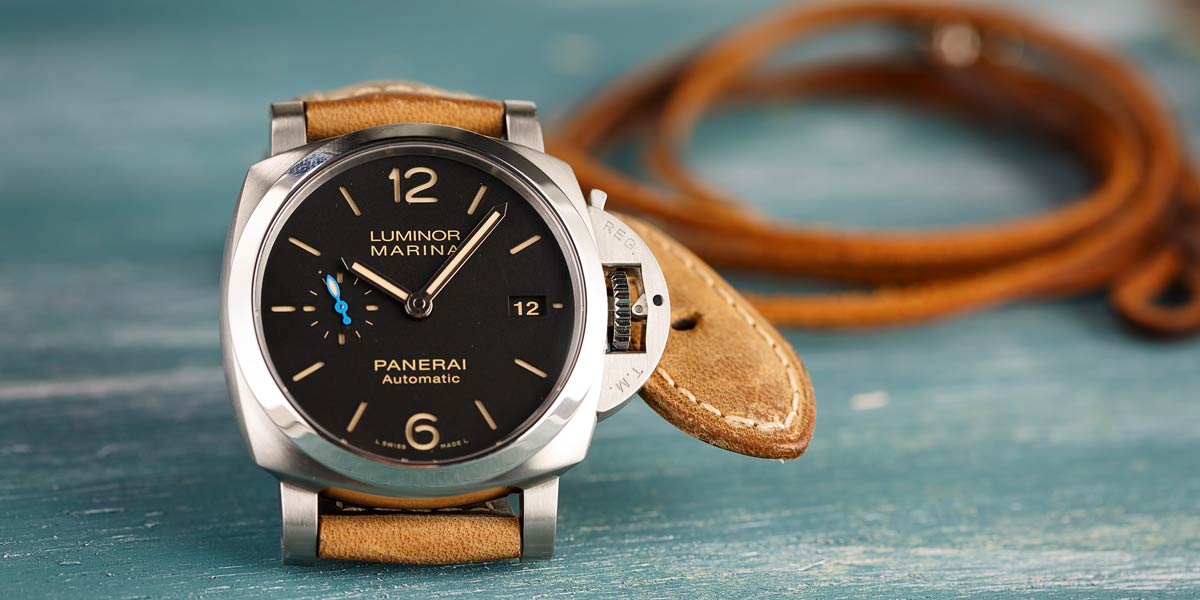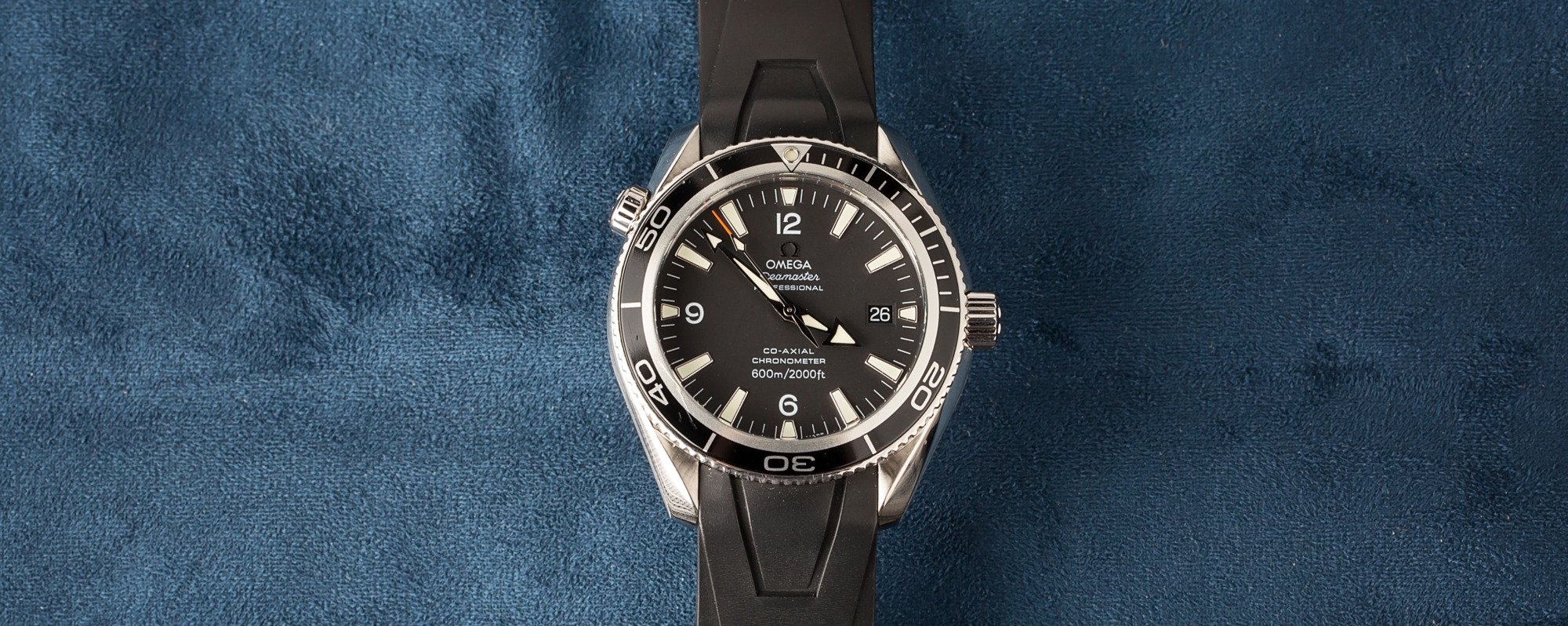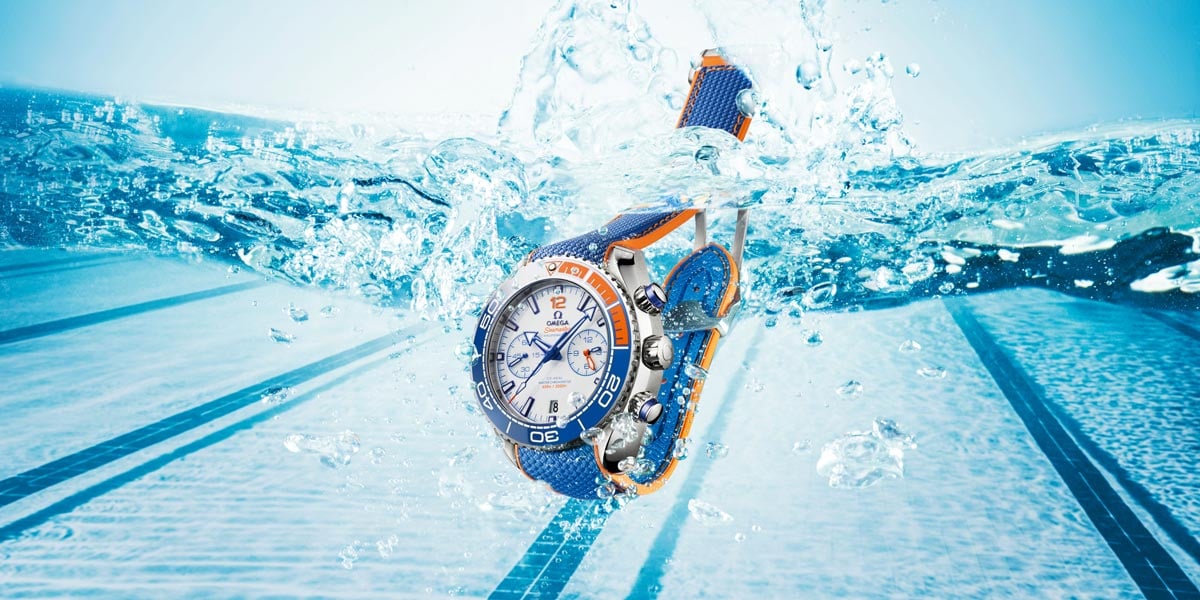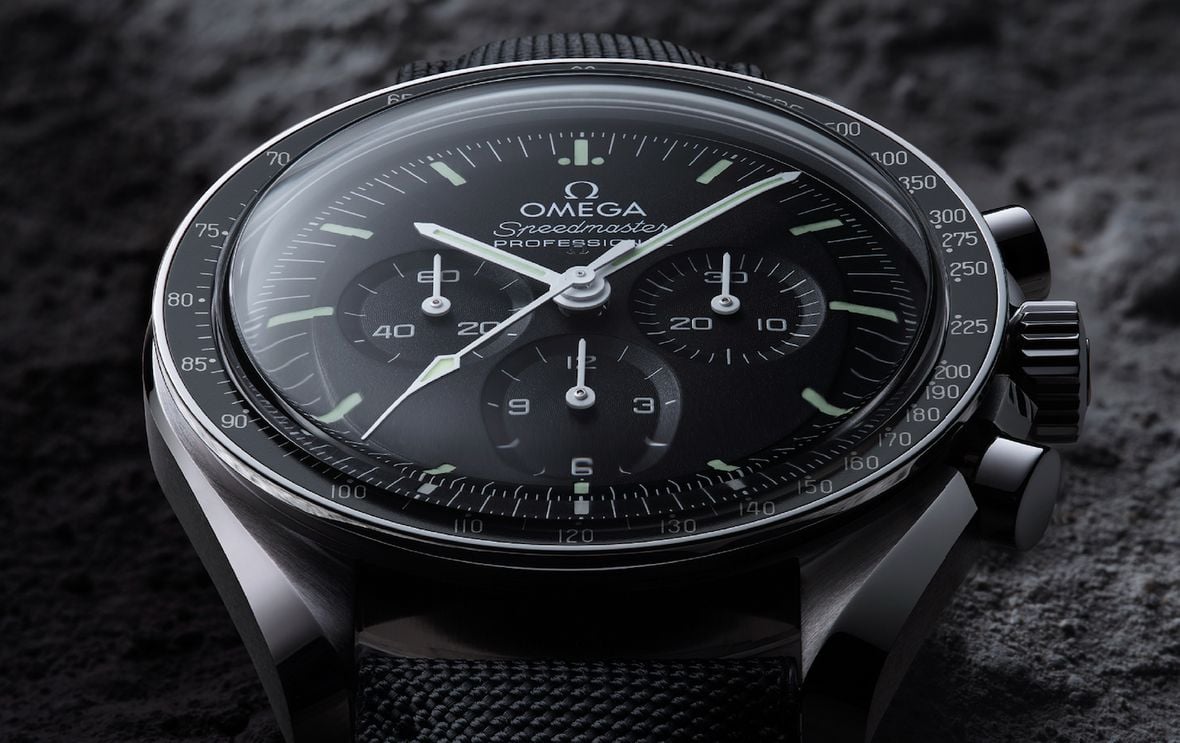The Seamaster Diver 300M and the Planet Ocean are two of OMEGA’s most popular dive watches and part of the broader OMEGA Seamaster watch collection. While relatively young models – the Diver is less than 30 years old and the Planet Ocean is less than 15 years old – both Seamaster Professional models have risen to the top of OMEGA’s must-have models. Which begs the question, what exactly is the difference between these two modern Omega divers?
Both watches have seen significant improvements, with enhanced mechanical precision now setting a new standard for accuracy. Omega has also introduced modern updates, including a ceramic bezel, clearer numerals and hour markers, and a helium escape valve. Join us as we take a closer look at the Omega Seamaster Diver 300M vs. Planet Ocean watches to outline their similarities and differences.
Design Differences
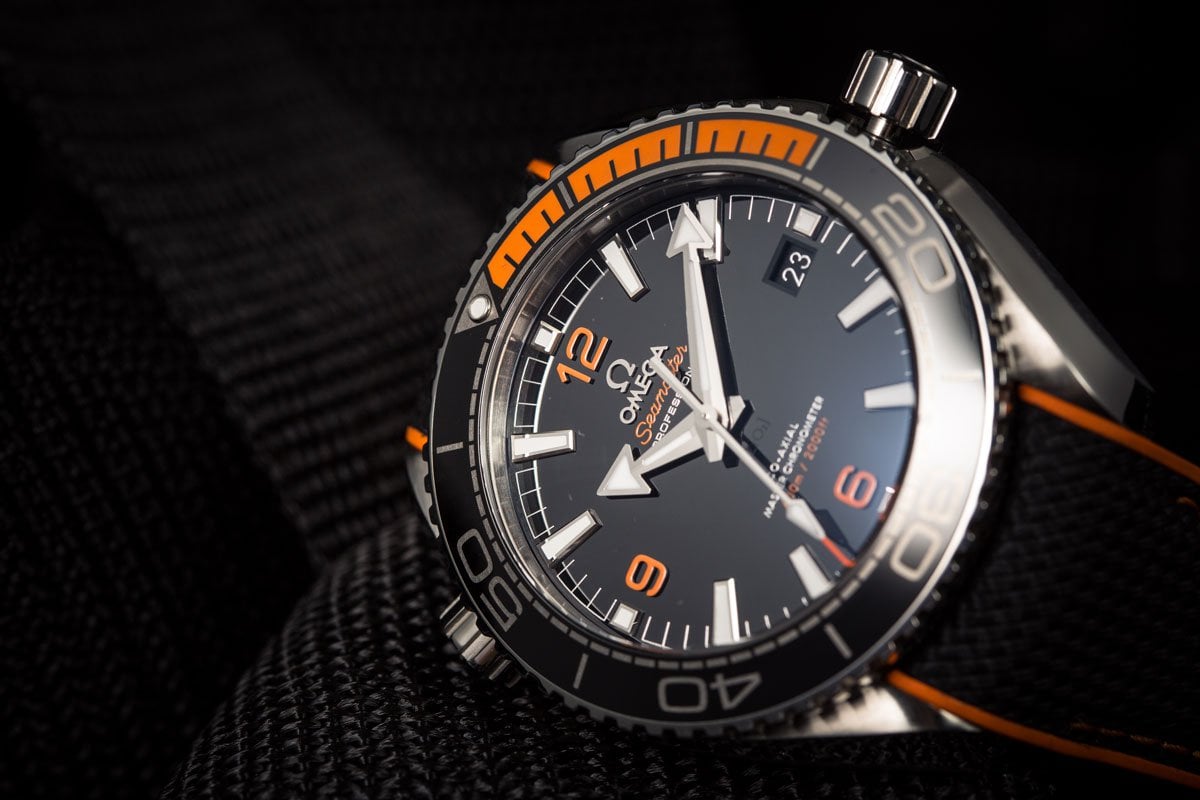
The OMEGA Seamaster Diver 300M made its debut in 1993 and became famous as James Bond’s watch in the 1995 movie, GoldenEye. Planet Ocean 600M followed over a decade later, joining the OMEGA catalog in 2005. When looking at the Diver300M and the Planet Ocean side by side, right off the bat we see that the former is dressier in design while the latter sports a tool-watch aesthetic.
From the Diver’s scalloped bezel and curvy crown guards to its decorative five-link bracelet and skeletonized sword-shaped hands, this is unmistakably a luxury sports watch that also happens to be a very capable dive watch. On the other hand, the OMEGA Planet Ocean, which takes its broad-arrow hands, a smattering of Arabic numerals, thicker indexes, and knurled bezel from the original 1957 Seamaster 300, emphasizes its diving capabilities but also happens to be a luxury watch. Furthermore, the bracelet option of the Planet Ocean is a more straightforward three-link style and the case does not include protective shoulders around the winding crown.
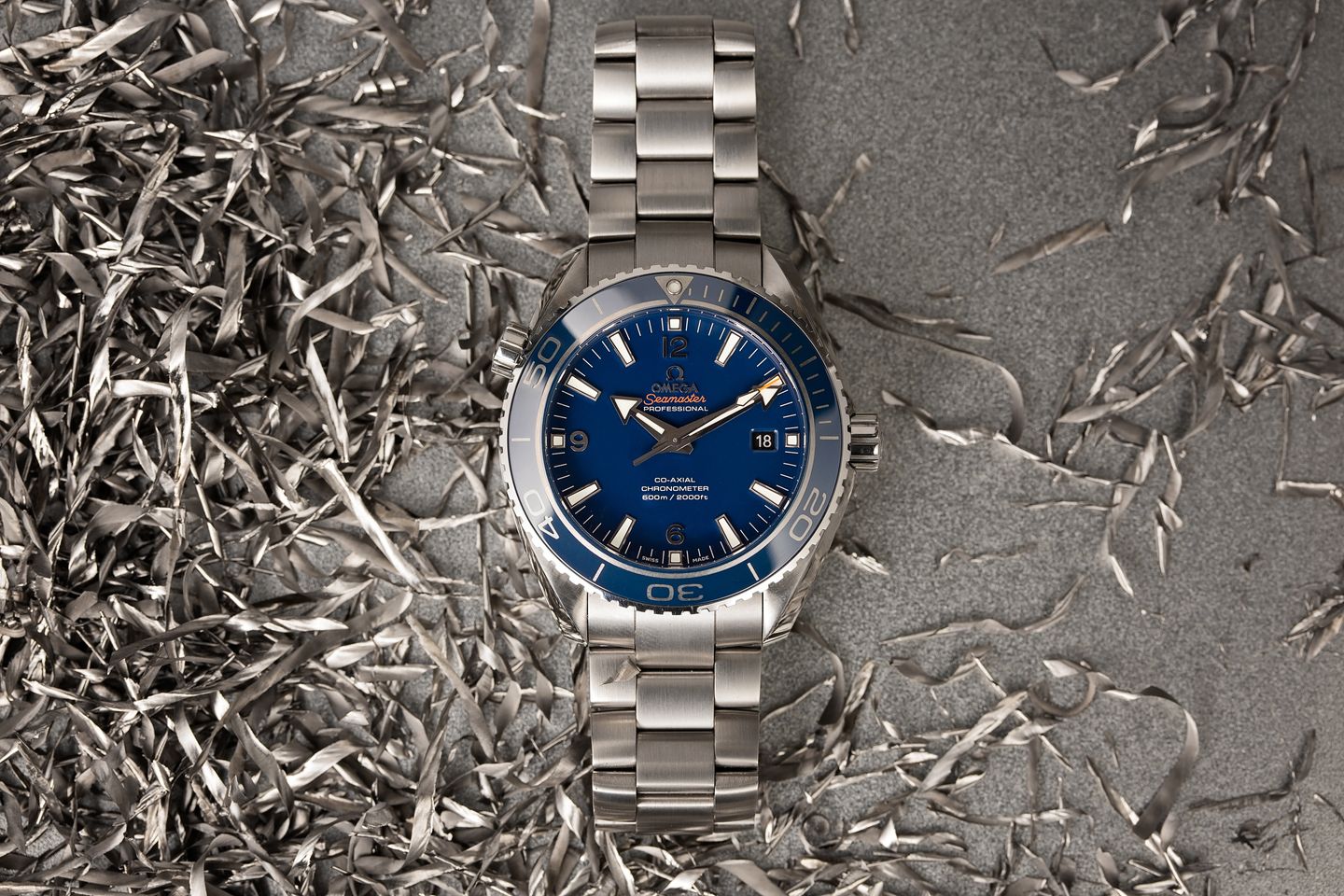
As their names imply, the Diver is water-resistant to 300 meters while the Planet Ocean has a 600-meter depth rating. While both models offer a few different case sizes and are equipped with protruding helium escape valves, the case of the Planet Ocean is generally thicker in profile.
In standard Omega form, both the Diver 300M and the Planet Ocean 600M offer a variety of metal options, colors, and bracelet/band selections, resulting in a vast assortment of configurations. Additionally, along with the standard time/date versions, Omega also makes the Diver Chronograph, the Planet Ocean Chronograph, and the Planet Ocean GMT.
New Updates
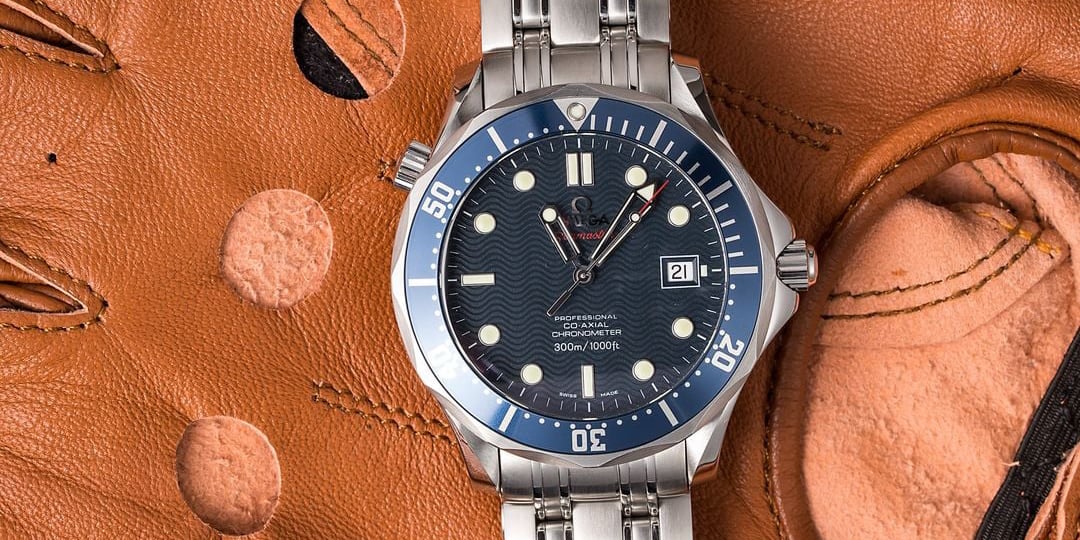
The Planet Ocean and the Diver 300 have both benefited from a bevy of updates in recent years. The revamping of the Planet Ocean collection occurred in 2016 while the Diver underwent its refresh in 2018.
A major design update to the PO lineup was the introduction of new case sizes. Rather than the previous 37.5mm, 42.5mm, and 45.5mm sizes, the standard Planet Ocean now comes in a choice of 39.5mm and 43.5mm. The Planet Ocean GMT has a 43.5mm case and the Planet Ocean Chronograph has a 45.5mm case. To match its ceramic bezel, the Planet Ocean now also has a ceramic dial.
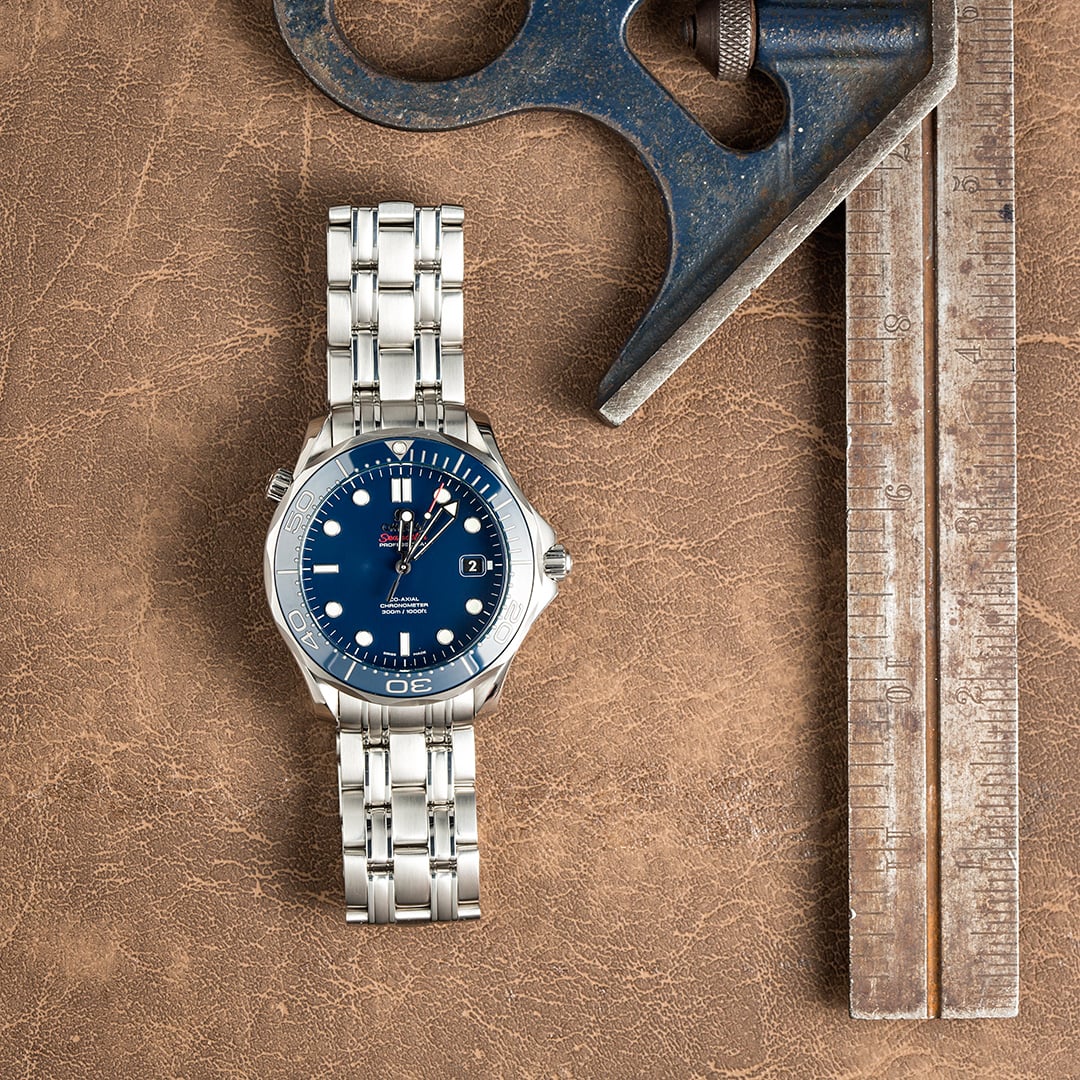
Similarly, The Omega watch brand modified the case size of the Diver 300M where it is now slightly larger at 42mm compared to the previous 41mm diameter (the new Diver 300M Chronograph models have 44mm cases). The Diver 300M now also houses a ceramic dial and welcomes the return of the famed wave pattern, which is laser engraved onto the surface.
Unsurprisingly, Omega has furnished the latest Planet Ocean and Diver 300M models with its new-generation METAS-certified Master Chronometer automatic movements with magnetic resistance ratings of 15,000 gauss. The Diver 300M runs on Caliber 8800 (single barrel, power reserve of 55 hours) while Planet Ocean is equipped with Caliber 8900 (twin-barrel, power reserve of 60 hours). Both models include transparent sapphire casebacks to permit a view of the movements inside the watches.
Omega Planet Ocean
The Omega Planet Ocean is a versatile timepiece, perfect for both formal events and diving adventures, featuring a sleek design and enhanced legibility in low light. It stands apart from the Seamaster with unique elements like arrow-shaped hands and a glossy black ceramic dial, marked distinctly for visibility. This model is notable for its 600 meters/2000 feet water resistance, making it ideal for deep-sea exploration. A specialized helium valve in the Planet Ocean enhances its deep-diving capability by regulating internal pressure.
Accuracy is a hallmark of this watch, certified by both METAS and COSC, ensuring its precision and resistance to magnetic fields up to 15,000 gausses. The Planet Ocean is powered by the 39 jewel caliber 8900 movement, boasting a 60-hour power reserve. For those seeking additional functionality, there’s a Chronograph version with a stopwatch, driven by the same caliber 9900 movement found in the latest Seamaster Diver 300m Chronographs.
Earlier Seamaster 300m Diver models, pre-2018, lacked the advanced METAS certification, a feature now standard in newer versions. The Planet Ocean’s pros include its water resistance, advanced movement, and diverse style options, though it comes at a higher price and a larger 43.5 mm case size. Overall, the Omega Planet Ocean is a blend of style, functionality, and technological advancements, appealing to both watch enthusiasts and professional divers.
Omega Seamaster
Predating the Planet Ocean, the Omega Seamaster collection boasts a wide array of styles and sizes, designed for versatility in both everyday and formal settings. Ideal for the average diver and more affordable than the Planet Ocean, it’s a practical choice for daily wear. However, its water resistance is half that of the Planet Ocean, a limitation for professional deep-sea diving.
The Seamaster’s bezel offers less grip compared to its counterpart, a difference noticeable during active use. It also features a Chronograph version, utilizing the same caliber 9900 movement found in the Planet Ocean Chronograph. While the Seamaster excels with its magnetic-resistant Si14 silicon balance spring and a new bracelet design, its single-barrel Omega caliber 8800 movement has a slightly shorter power reserve of 55 hours, compared to the 60 hours offered by the Planet Ocean. Despite these differences, the Seamaster remains a reliable and stylish option within Omega’s diverse range.
Omega Seamaster Diver or Planet Ocean?
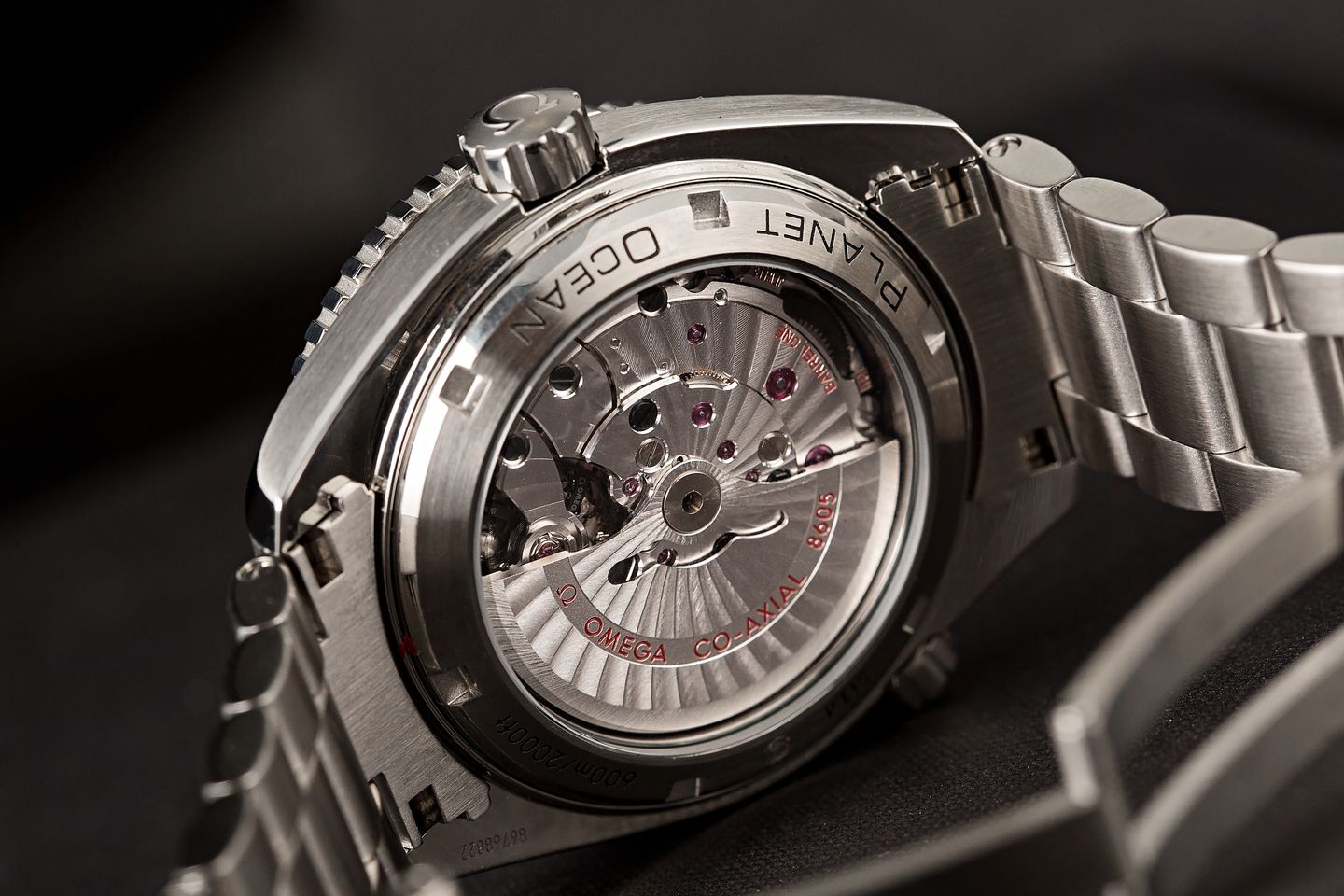
Although both are superb Omega Seamaster models that share plenty of similarities, the Diver and the Planet Ocean offer a different take on the modern dive watch. In short, the Diver is dressier and more embellished than its younger and more robust sibling, the Planet Ocean.
Aside from water-resistance (300 meters is more than enough for the majority of watch wearers), they offer almost identical functionalities and high-grade materials, so picking one comes down to a matter of style preference. James Bond has worn both but which would you pick? Leave us your thoughts in the comments sections below.
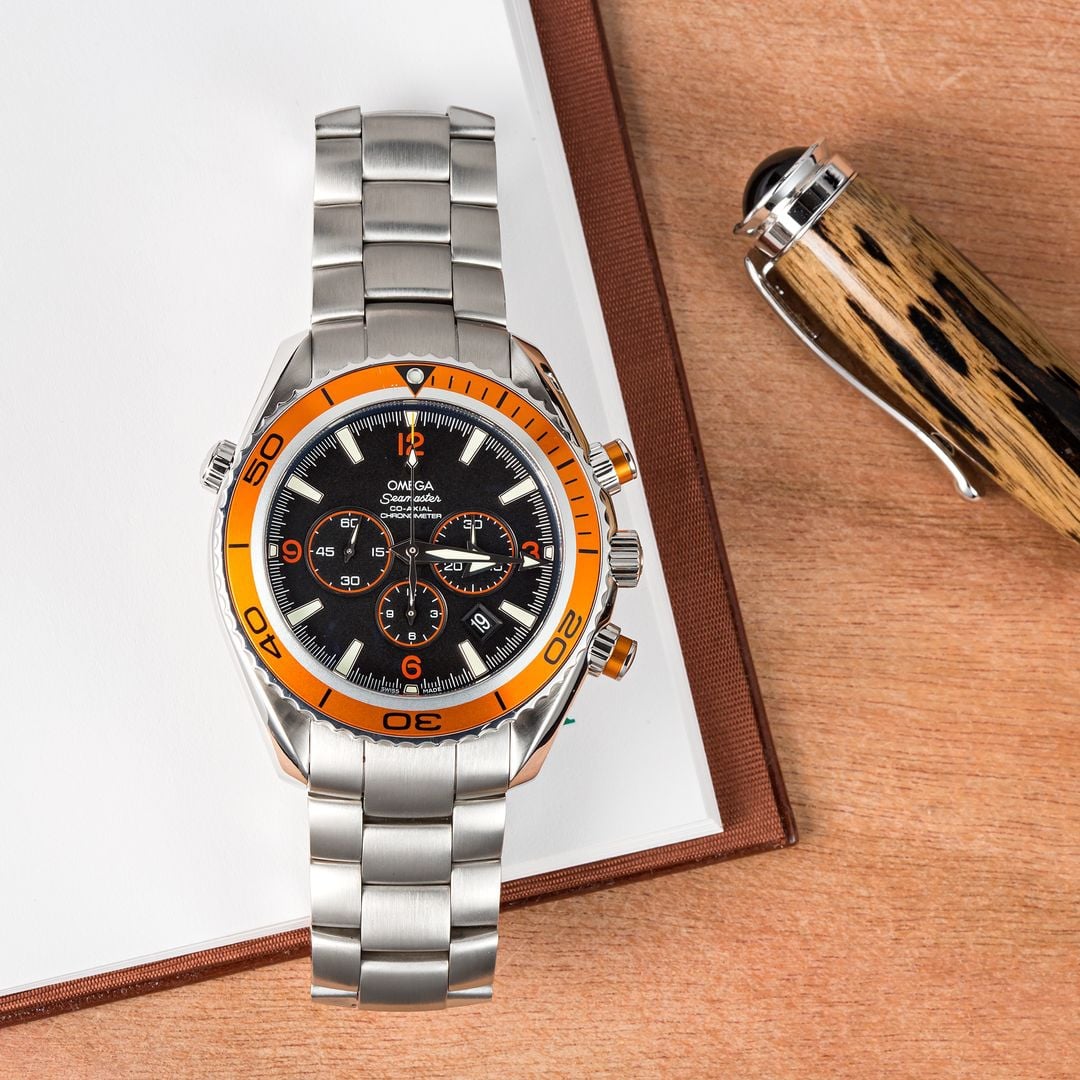
For those weighing the differences between the OMEGA Seamaster Diver 300M and the Planet Ocean before making a purchase, our comprehensive Seamaster buying guide is an invaluable resource. The guide offers a thorough comparison of all Seamaster models as well, highlighting their unique features, designs, and technical specifications. By exploring the various case sizes, materials, movements, and complications available, potential buyers can gain a clearer understanding of which model best aligns with their individual needs and preferences.
